#scandinavian mid century design
Explore tagged Tumblr posts
Text

Lily Collins and Charlie McDowell’s Mid-Century Los Angeles case study house
Interior design: Emily Farnham
Photo credit: Justin Chung
#mid century modern#interiors#case study houses#scandinavian design#light#pendant lamps#ph5#poul henningsen
7 notes
·
View notes
Text
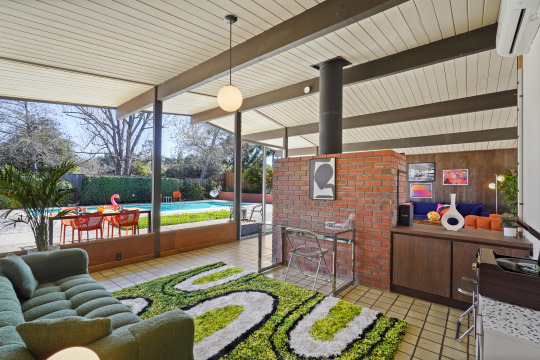



Office area of Mid Century Modern home built by Joseph Eichler in 1964 in Thousand Oaks, CA. This home was built as part of a develpment of Eichler homes and designed by famed mid century architect, A. Quincy Jones.
#eichler#design#mid century#mid century modern#scandinavian design#space age#verner panton#geometric#interior design#1960s#60s#record player#vintage modernism#modernism#architecture#modern design#charles eames#eames chair#chrome#lucite#colorful#vintage#southern california
7 notes
·
View notes
Text
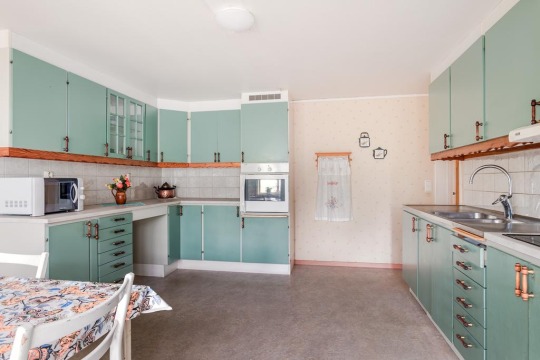
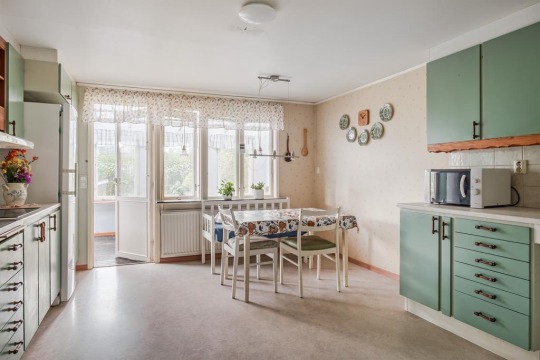
#kitchen#retro kitchen#funkis#50s home#mid century home#mid century design#mid century kitchen#swedish home#swedish house#sweden#scandinavian home#scandinavian decor#scandinavian design#vintage home#vintage home decor#vintage kitchen#retro home decor
9 notes
·
View notes
Text
when we moved into our current apartment, the current residents left two loveseats & a recliner, which was convenient because they're p good quality & it saved us having to buy living room furniture right away, but also they're all beige and the carpet is beige and the walls are white and our ikea bookshelves are white and the blinds are white and this week my brain has chosen to flail and thrash in protest at the lack of color in our living room, but guess what, brain!! we just got a puppy & keep spending money on her, so we don't get to redecorate the entire living room right now! you'll just have to live with it!!!!!
#also colin's taste in interior design is much more staid than mine#he wouldn't want the walls painted emerald even if now was an opportune time to paint them :(#an eggplant purple velvet couch? forget it#colin thinks a colorful throw pillow dominates the whole room#colin thinks that navy blue is garishly bright#colin agrees that the beige is bad but what if everything was a nice light grey?#colin says he doesn't like scandinavian minimalism but winces at medium-toned wood#colin says he doesn't hate saturated color but then gives sage green as an example#colin has texture aversions and I respect that but he doesn't even like looking at satin#colin says he likes mid century modern but what he means is ikea showroom#I'm just making fun of him now to shame him into letting me paint the living room crimson
10 notes
·
View notes
Text



Picked up this Danish bed frame as part of bedroom set by Jesper. I really love the floating nightstands.
1 note
·
View note
Text
https://10-best-marketing-tips.tumblr.com/interior-designer-business
Interior Designer Business
GROW YOUR INTERIOR DESIGNER BUSINESS: 10 ESSENTIAL TIPS
CALL: +91 22 401 222 85

10 BUSINESS TIPS TO GROW AN INTERIOR DESIGNER COMPANY’S BUSINESS!
Here are some ideas to get you started:
Optimize Your Website: Ensure your website is visually appealing, easy to navigate, and mobile-friendly. Use high-quality images of your designs to showcase your expertise.
Create Compelling Content: Regularly update your blog with design tips, case studies, client testimonials, and industry trends. This content not only engages visitors but also boosts your search engine rankings.
Utilize Social Media: Showcase your portfolio on platforms like Instagram, Pinterest, and Houzz. Engage with your audience through behind-the-scenes content, design inspiration, and before-and-after transformations.
Implement SEO Strategies: Use relevant keywords throughout your website and blog content to attract organic traffic. Consider local SEO techniques to target clients in specific geographic areas.
Leverage Email Marketing: Build an email list of potential clients and past customers. Send out newsletters with design tips, promotions, and updates on your latest projects to keep your audience engaged.
Invest in Paid Advertising: Use targeted advertising on platforms like Google Ads and social media channels to reach potential clients actively searching for interior designers or decor services.
Collaborate with Influencers: Partner with influencers in the home decor and design niche to showcase your work to their followers. This can significantly expand your reach and credibility.
Collect and Showcase Reviews: Encourage satisfied clients to leave reviews on platforms like Google My Business, Yelp, and Houzz. Positive reviews build trust and influence potential clients’ decisions.
Offer Free Resources: Create downloadable guides, checklists, or eBooks related to interior design tips. Require visitors to provide their email address to access these resources, helping to grow your email list.
Network and Partner Strategically: Attend industry events, join local business associations, and collaborate with complementary businesses like furniture stores or real estate agencies. Networking can lead to referrals and partnerships that benefit your business.
By implementing these digital marketing strategies tailored to your interior designing business, you can effectively attract new clients, strengthen your online presence, and ultimately grow your business.
The Importance of a Strong Online Presence
Understanding the Interior Designer Landscape Online
Building a Strong Online Presence for Your Interior Designer Business
Content Marketing Strategies for Interior Planners
Identifying Your Target Audience
SEO and SEM for Interior Designer Websites
Leveraging Social Media for Interior Designer
Email Marketing for Interior Planners
Understanding Your Competitors’ Online Strategies
Paid Advertising for Interior Designer Businesses
Website Analytics and Conversion Optimization
Building Relationships and Online Reputation
Staying Ahead of the Digital Trends
Building a Strong Online Presence for Your Interior Designer Business
Creating a Professional Website
Optimizing Your Website for Mobile Devices
Importance of High-Quality Content
Building Trust and Credibility Online
#interior-design-ideas#interior-design-lover#home-decor-inspiration#dream-home-design#luxury-interior-design#modern-interior-design#mid-century-modern-design#scandinavian-interior-design#boho-chic-interior-design#farmhouse-interior-design#interior-design-consultation#kitchen-design-ideas#bathroom-design-ideas#living-room-makeover#home-staging-services
1 note
·
View note
Text
Vintage Danish Fabric Sofa
Item Number : #134
Vintage Stouby Sofa
Denmark 1980s
A vintage Danish Sofa by Stouby, Denmark. This is a lovely example in very good condition with a beech frame and upholstered in dark grey wool. If you are after a mid century Scandinavian sofa that is both comfortable and classically stylish, this may well be the one for you.
218L x 78H x 80Deep cm
Seat Height: 47cm
#stouby fabric sofa#mid century furniture melbourne#fabric danish sofa#vintage danish fabric sofa#danish wood and fabric sofa#mid century couch adelaide#mcm couch#spoke back vintage danish sofa#1980s danish furniture#1980s Scandinavian sofa#mid century modern sofa#mid modern century couch#furniture stores mid century modern#furniture stores smith stree#sofa retro vintage#sofa danish design#sofa retro scandinavia#refurbished mid century furniture#comfortable mid century fabric sofa#mcm furniture melbourne#mcm furniture adelaide#mcm furniture sydney#mcm furniture tasmania#mcm furniture brisbane#mcm furniture for sale#home furniture#60s sofas#mcm sofa melbourne#mcm sofa for sale#mcm sofa
0 notes
Text
The Top 5 Interior Design Aesthetics of 2024
Interior design aesthetics constantly evolve, but some trends are expected to be particularly popular in 2024. We continue to see warm and welcoming interiors that dominate the interior design scene as people seek to create stylish and inviting spaces.
After the past few years' challenges, many people seek to create homes that feel like a sanctuary. Warm and welcoming interiors can provide peace and comfort, making them the perfect place to relax and recharge.
Warm and welcoming interiors help to foster connection and community. When people feel comfortable and at ease in their surroundings, they are more likely to invite others and spend time together.
It is a way for us to express our style. Homeowners can create unique and memorable spaces by choosing colors, materials, and furnishings that reflect their taste.
The top interior design trends for 2024 are:
Biophilic design: This trend is about bringing the outdoors in, focusing on organic materials, natural textures, and plants. Biophilic design has been shown to have several benefits for health and well-being, including reducing stress, improving mood, and boosting creativity.
Bold colors and textures: In 2024, we're shifting towards bolder, more vibrant colors and rich textures. This trend is all about making a statement and expressing your individuality. Think of deep jewel tones, metallic accents, and plush fabrics.
Earthy hues: Earthy hues such as ochre, tan, taupe, light pinks, and light greys are also popular in 2024. These colors create a calming, relaxed, and welcoming atmosphere.
Curved furniture: Curved furniture adds a touch of softness and elegance to any space. It's also more comfortable than traditional square or rectangular furniture.
Sustainable materials: More and more people decorate their homes with sustainable materials. A growing awareness of the environmental impact of the home design industry drives this trend. Popular sustainable materials include reclaimed wood, bamboo, and recycled glass.
Why are these trends popular?
These trends are popular for several reasons. First, they reflect a growing desire for stylish and functional homes. People want spaces that are comfortable and inviting but also reflect their style.
Second, these trends are a response to the increasing stresses of modern life. People are looking for ways to create homes that are an oasis of calm and relaxation. Biophilic design and earthy hues can help to create a sense of peace and well-being, while bold colors and textures can add a touch of excitement and fun.
Finally, these trends also reflect a growing awareness of the importance of sustainability. People increasingly decorate their homes with environmentally friendly and ethically sourced materials.
How can you incorporate these trends into your own home?
There are many ways to incorporate the top interior design trends 2024 into your home. Here are a few tips:
Biophilic design: Add plants to your home or create a living wall. You can also use natural materials such as wood and stone in your décor.
Bold colors and textures: Paint a feature wall in a bold color or add metallic accents to your décor. You can also choose plush fabrics for your furniture and curtains.
Earthy hues: Paint warm and earthy walls, or choose furniture in natural wood tones.
Curved furniture: Invest in a curved sofa or armchair. You can add curved accessories to your décor, such as a curved mirror or vase.
Sustainable materials: Choose furniture and décor made from sustainable materials. You can also shop at thrift stores and flea markets for unique pieces made from recycled materials.
No matter your style, there's a way to incorporate the top interior design trends 2024 into your home. With some planning, you can create a stylish, functional space that reflects your unique personality.
Here are a few of the most anticipated design trends for the coming year, along with images to help you visualize them:
Biophilic design
Biophilic design is a holistic approach to design that emphasizes the connection between humans and nature. The biophilic design originated in the 1980s with the work of biologist Edward O. Wilson, who proposed the theory of biophilia, which states that humans have an innate connection to nature and other living things. Biophilic design is a way to incorporate elements of nature into the built environment to improve human health and well-being.
Biophilic design can be implemented in a variety of ways, such as:
Using natural materials, such as wood, stone, and plants
Incorporating patterns and textures that mimic nature, such as wood grain and water ripples
Providing access to natural light and views
Creating spaces that encourage people to connect with nature, such as outdoor terraces and green roofs
Biophilic design has become increasingly popular in recent years for several reasons.
First, a growing body of research shows that biophilic design can have several benefits for human health and well-being, such as reducing stress, improving mood, and boosting creativity.
Second, biophilic design is a way to create more sustainable and resilient buildings. Biophilic design can help reduce energy consumption, improve indoor air quality, and create more comfortable and productive spaces by incorporating elements of nature into the built environment.
Finally, biophilic design is a way to connect with nature and to bring the outdoors in. This especially appeals to people who live in urban areas or spend much time indoors.
Here are some additional reasons why biophilic design is so popular today:
It is a reaction to the overly sterilized and artificial environments of the 20th and early 21st centuries. People are looking for more natural and human-centered spaces.
Biophilic design is a way to create a sense of place and to connect with the local environment.
Biophilic design is a way to educate people about the importance of nature and to promote environmental stewardship
It incorporates natural elements, such as plants, wood, and stone, into interior and exterior spaces. Biophilic design has been shown to have several benefits, including reducing stress, improving mood, and boosting creativity.
Japandi
Japandi design originated outside of Japan, in Scandinavia. It is a fusion of Japanese and Scandinavian design styles, which share many similarities, such as a focus on simplicity, functionality, and natural materials.
Clean lines and minimalism, natural materials, neutral colors, and functionality characterize Japandi’s design. It is highly influenced by the Wabi SABI aesthetics that celebrate the beauty of imperfections and the passage of time.
Japandi design has become increasingly popular in recent years for several reasons.
First, it is a style that is both stylish and functional. Japandi interiors are often described as being clean, airy, and inviting.
Second, Japandi design is a sustainable choice. Japandi designers often use reclaimed materials and traditional construction methods. This is because they believe respecting the environment and living in harmony with nature is important.
Finally, Japandi design is a way to express your individuality. Japandi designers embrace the imperfections of objects and believe that these imperfections add to the beauty and character of an object. This makes Japandi design a great way to create a unique home that reflects your style.
Here are some additional reasons why Japandi design is so popular today:
It reacts to the overly decorated and mass-produced interiors of the 20th and early 21st centuries. People are looking for a more authentic and personal style of interior design.
Japandi design is a way to connect with nature and to bring the outdoors in. This is especially appealing to people who live in urban areas.
Japandi design is a way to slow down and appreciate the present moment. This is important in our fast-paced world.
Mid-century modern
Mid-century modern design aesthetics emerged in the United States and Europe in the middle of the 20th century. It is characterized by its clean lines, simple forms, and use of natural materials such as wood, metal, and glass.
Mid-century modern designers were inspired by the Bauhaus movement, emphasizing simplicity, functionality, and beauty. There are several reasons why mid-century modern design is a trend in 2024. One reason is that it is a timeless style that has never gone out of fashion. It is well-made, durable, easily mixed, and matched with other styles.
Additionally, mid-century modern design is often seen as minimalist and uncluttered, appealing to many people in today's fast-paced world.
Another reason why mid-century modern design is a trend in 2024 is that it is a sustainable style. Mid-century modern furniture is often made from natural materials and designed to last. Additionally, mid-century modern design is often associated with biophilic design, which focuses on connecting people with nature. Biophilic design has been shown to benefit human health and well-being, including reducing stress, improving mood, and boosting cognitive function.
Scandinavian Modern
Scandinavian modern design is a style of interior design that emerged in the Nordic countries (Denmark, Finland, Norway, Sweden, and Iceland) in the mid-20th century. Its simplicity, functionality, and use of natural materials characterize it. Scandinavian modern design is often described as being "clean," "minimalist," and "airy."
Some key features in Scandinavian modern design include simple, clean lines, functional furniture and decor pieces, natural materials, neutral colors, and natural light. Scandinavian modern interiors often incorporate pops of accent color and typically use natural materials, such as wood, leather, and stone.
Wabi-sabi
Wabi-sabi interior design originated in Japan in the 15th century. It is a Japanese aesthetic that celebrates the beauty of imperfections and the passage of time. Wabi-sabi was influenced by Zen Buddhism and the tea ceremony, which both emphasize the importance of simplicity and the appreciation of the present moment.
Wabi-sabi interior design is becoming increasingly popular today for several reasons.
First, it is a style that is both calming and inviting. Wabi-sabi interiors are often described as being serene, tranquil, and relaxing. They use natural materials, simple designs, and a muted color palette.
Second, wabi-sabi interior design is a sustainable choice. Wabi-sabi designers often use reclaimed materials and traditional construction methods. This is because they believe respecting the environment and living in harmony with nature is important.
Finally, wabi-sabi interior design is a way to express your individuality. Wabi-sabi designers embrace the imperfections of objects and believe that these imperfections add to the beauty and character of an object. This makes wabi-sabi interior design a great way to create a unique home that reflects your style.
Minimalism
Finally, we get to Minimalism.
Minimalism is both an interior design aesthetic and a style. It is an aesthetic because it is a particular way of approaching design, focusing on simplicity, functionality, and clean lines. It is also a style because it has its own unique set of characteristics, such as the use of natural materials, geometric shapes, and neutral colors. You can see that minimalism runs through each design described in this blog.
Minimalist interior design emerged in the 1960s and 1970s as a reaction to the excesses of mid-century modern design. Minimalist designers sought to create simple, uncluttered, and functional spaces. They emphasized using clean lines, geometric shapes, and natural materials.
Minimalism has become increasingly popular in recent years as people seek ways to reduce stress and create more peaceful and calming home environments. Minimalist interiors are free of clutter and distractions, which can help to promote relaxation and well-being.
Here are some of the key characteristics of minimalist interior design:
Simplicity: Minimalist interior design is all about simplicity. Minimalist designers focus on creating spaces that are uncluttered and free of distractions.
Functionality: Minimalist interior design is also about functionality. Minimalist designers create spaces that are comfortable and easy to use.
Clean lines: Minimalist interior design is characterized by its clean lines and geometric shapes. This can be seen in the furniture, lighting, and accessories used.
Natural materials: Minimalist designers often use natural materials, such as wood, metal, and glass. These materials create a warm and inviting atmosphere.
Neutral colors: Neutral colors, such as white, beige, and grey, are a staple of minimalist interior design. They create a clean and uncluttered look.
You can do a few things if you want to create a minimalist interior design aesthetic in your home.
First, start by decluttering your space. Get rid of any unnecessary clutter and organize your belongings.
Second, focus on using simple and functional furniture. Choose pieces that are made from natural materials and have clean lines.
Third, use a neutral color palette. This will create a clean and uncluttered look.
Finally, add some pops of color and personality with accessories. This will help to make your space feel warm and inviting.
Minimalist interior design is an excellent option for anyone looking for a timeless, stylish, and functional aesthetic.
No matter your style, there is an interior design aesthetic out there that is perfect for you. Experiment with different aesthetics and find one that makes you feel happy and at home.
"May your home be a place where friends meet, family gathers, and love grows. " -- Anonymous
As with everything I post on my blogs, please feel free to comment, or if you have any questions, please email me through my contact page. I welcome it anytime!
Design with your heart™️
Happy decorating, my friends!
Mary
#Halter ranch#halter ranch vineyard#halter ranch Paso robles#central coast vineyard#central coast wine tasting#wine tasting in California#Paso Robles wine tasting#top 5 interior design aesthetics of 2024#the top 5 interior design aesthetics of 2024#2024 design trends#2024 interior design trends#Scandinavian modern#biophilic design#biophilic trends for 2024#biophilic design aethetics#mid century design aesthetics for 2024#mid century design is still trending for 2024#japandi trends for 2024#japandi 2024 trends#big trends for interior design in 2024#japandi design#minimalism is still trending for 2024#minimalism is a huge trend for 2024#wabi sabi trends for 2024#wabi sabi 2024 trending#wabi sabi trends#what is wabi sabi#wabi sabi interior design#the top 5 interior design aesthetics in 2024#interior design trends for 2024
1 note
·
View note
Photo

Raleigh Kitchen Mid-sized danish medium tone wood floor and brown floor open concept kitchen photo with a single-bowl sink, flat-panel cabinets, white cabinets, quartz countertops, white backsplash, quartz backsplash, stainless steel appliances, an island and white countertops
#open shelving#farmhouse kitchen#modern mid century#scandinavian design#brass kitchen hardware#pantry cabinet ideas
0 notes
Text
How to achieve a stress-free life by creating a Scandi-style home
Year after year, our Scandinavian neighbours top the charts of the happiest countries in the world. So, what can we learn from the Nordic nations to help reduce stress? How can we refresh our homes to embrace Scandi style?
Collaborative feature Results from the yearly World Happiness Report often show that Denmark, Sweden and Norway are considered the happiest places to live, with the residents of Scandinavian countries reporting that they feel content and happy more often than UK folks. Many factors are considered important to personal wellbeing within Scandi countries, including creating relaxing interiors,…
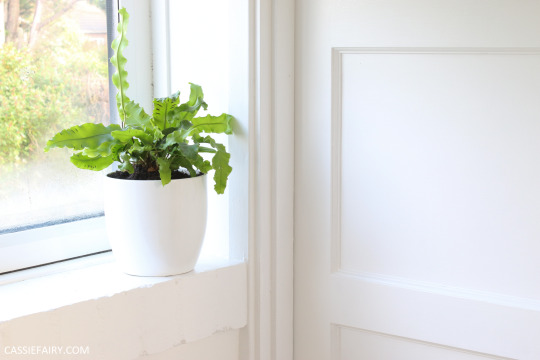
View On WordPress
#danish#decor#decorating#Design#diy#home#inspiration#interior design#interiors#mid-century modern#minimalism#minimalist#nordic#scandi#scandinavian#storage
1 note
·
View note
Text

MNN Apartment is a minimalist apartment located in Warsaw, Poland, designed by MAP. The apartment is a blend of Scandinavian simplicity, Japanese elegance, and the timeless appeal of mid-century modern design, avoiding the trappings of trendiness for a more genuine reflection of the homeowner’s preferences. This choice of style is a direct nod to the owner’s appreciation for Scandinavian design and a budding interest in Japanese aesthetics, inspired by recent travels.
#minimalism#minimal#minimalist#minimal interior#interior design#minimalist kitchen#minimal design#leibal
67 notes
·
View notes
Note
If the Shire was plopped into the modern era hobbit holes and all, what do you think they'd do when they saw and experienced all the modern art and furniture of our era? How would hobbits adapt to furniture from styles like Bauhaus and mid century modern to the Scandinavian modernism designs of Ikea? Cause all of it was made without traditional woodworking attached, granted, but the main motive for a lot of the interior design and furniture in modern styles is the 'optimal' or most efficient levels of convenience and comfort- and hobbits *are* big fans of both soo... it's not like it's a rigged game here. and let's be real, the food court mid-Ikea might warm them up to their aesthetic after all~~ 👀😇
💐 ASK ME about my headcanons about hobbits and the Shire! 💐
Wow, I love how your brain works, anon! (Some of the asks I've been getting are seriously so creative, I can't even...)
As for me, I am of two minds about this issue. Comfort, you see, is not just physical comfort, but also that which is familiar, that which is "home." In the case of hobbits, they likely value both, and are generally averse to all things new and unfamiliar.
As such, I believe that at first they would be quite put off by the sharp angles and the straight lines of midcentury modern and other similar styles, and if they had a choice, they would gravitate towards traditional Amish-made furniture and anything that you might find in an antique store.
However, the key word is at first. Once you trick them or bribe them into sitting in an Eames chair, for instance, they'll realize that it feels like curling up in the palm of a hand designed specifically to cradle you, and they'll be one hundred percent sold. And let's not forget the hygge aesthetic, which is all about warm light, soft palettes, and lots of warm, huggable pillows. Hygge and hobbit, I think, are concepts that go hand in hand!
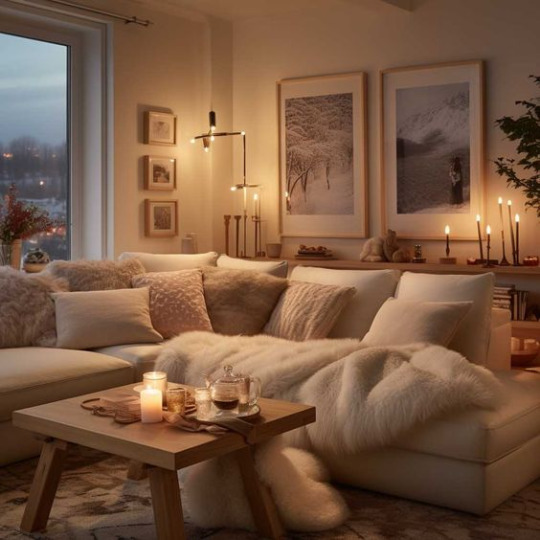
(image credit)
9 notes
·
View notes
Text
Mid-Century Modern Chair Design

Dutch Design Reed & Teak Wood Desk Chair, 1950s - Vintage wicker and wood chair, mid-century Scandinavian design, minimalist aesthetic, angled legs. Follow Ceramic City on Tumblr Source: https://research-lighting.tumblr.com/post/747481794825404416/dutch-design-reed-teak-wood-desk-chair-1950s
#vintage#midcentury#retro#modern#design#product design#home#decor#decoration#home decor#home design#interiors#interior design#living room#bedroom#kitchen#buildings#architecture#furniture#furniture design#industrial design#minimalism#minimal#living rooms#lighting design#lights#bathroom#contemporary
8 notes
·
View notes
Photo

Scandinavian design is known for its simplistic look.
#home#apartment#house#room#interior#interiordesign#decor#decoration#homedecor#interiordesigner#homedecoration#interiordecor#interiorstyling#decorating#livingroom#homedesign#interiordecorating#roomdecor#homeideas#homeinterior#homestyle
20 notes
·
View notes
Photo
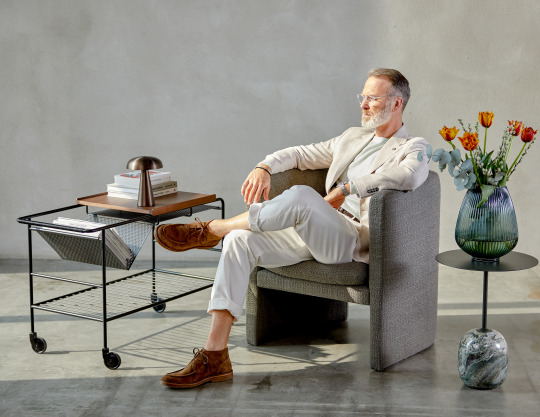
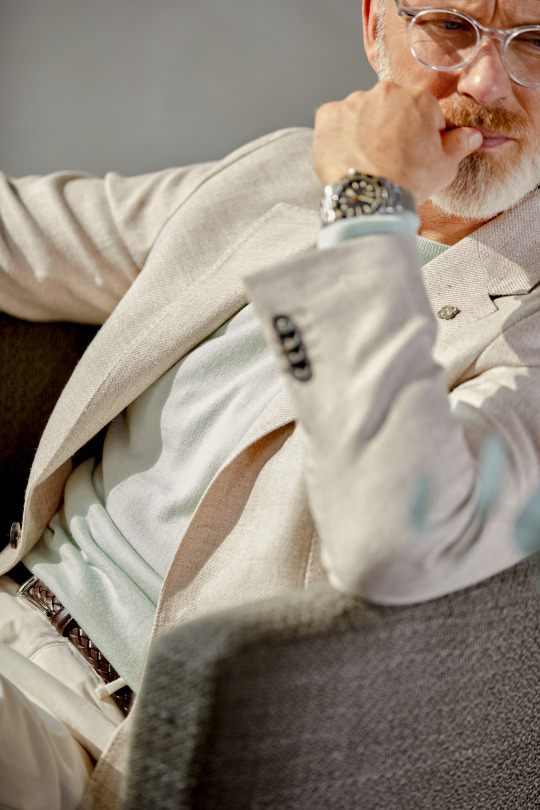
SCANDINAVIAN COLOUR PALETTE
Scandinavian design is a minimalist and functional approach to design that originated in the Nordic countries in the mid-20th century. It emphasizes simplicity, clean lines, and the use of indigenous materials in order to emphasize the natural elegance of nature. Scandinavian design is known for its understated refinement, attention to detail, and use of light and space.
In this week’s look, we have taken inspiration from Scandinavian design in the choice of matching colours, where the natural balance and tonal transitions play a major role, with the aim to create an understated elegance. More concretely, the natural sand beige blazer from Studio 73 made of a mix of linen, cotton and silk, is matched with a pair of solid white pleated trousers from Boglioli, made of cotton. Together with elements of mint in the sweater from Gran Sasso and transparent silver tones in the glasses from TBD, the look blends together and creates a natural, sober elegance.
Browse online here
51 notes
·
View notes
Text
50 Most Popular Types of Interior Design Styles- 02

Bridging Timelines: A Guide to Contemporary Classic Interior Design
Contemporary classic interior design is a harmonious blend of the old and the new, where timeless elegance meets modern sensibility. It's about creating spaces that feel both sophisticated and fresh, drawing inspiration from classic silhouettes and materials while incorporating contemporary elements for a dynamic and inviting atmosphere. Bridging Timelines: A Guide to Contemporary Classic Interior Design Shabby Chic Charm: Creating a Home Steeped in Nostalgia and Romance Embracing the Shadows: A Guide to Gothic Interior Design Art Nouveau: Nature's Symphony in Design Step into the Future: A Guide to High-Tech Interior Design Step into the Spotlight: A Guide to Hollywood Regency Interior Design Ahoy, Mateys! Dive into the Charm of Nautical Interior Design Saddle Up for Style: A Guide to Southwestern Interior Design Step Back in Time: A Guide to Victorian Interior Design Immerse Your Senses: A Guide to Moroccan Interior Design Finding Your Inner Peace: A Guide to Asian Zen Interior Design Groovy Grab Bag: A Deep Dive into Retro Interior Design Step into a Storybook: A Guide to Cottage Interior Design Breathe in the Mediterranean: A Guide to Tuscan Interior Design Crossing Borders, Crossing Styles: A Dive into Cultural Fusion Interior Design Skyscraper Chic: A Guide to Urban Modern Interior Design Key Characteristics of Contemporary Classic: - Neutral Color Palette with Accents: A foundation of warm or cool neutrals, like grays, beiges, or taupes, provides a timeless backdrop. Pops of color can be introduced through artwork, accent pillows, or upholstery for a touch of personality. - Clean Lines with Textural Layers: Clean lines and uncluttered surfaces define the contemporary aspect, while rich textures like velvet, linen, or wool add warmth and visual interest. - Classic Furniture with Modern Twists: Traditional furniture silhouettes, like wingback chairs or Chesterfield sofas, are reinterpreted with modern materials or updated proportions for a fresh take. - Statement Lighting: Lighting plays a crucial role in setting the mood. Opt for statement chandeliers or sculptural sconces for a touch of glamour, or sleek pendants for a more modern feel. - Artful Mix of Old and New: Don't be afraid to mix antique pieces with contemporary artwork or modern photography. This juxtaposition creates a dynamic and personalized space. Substyles of Contemporary Classic: - Mid-Century Modern: Think clean lines, pops of color, and iconic furniture pieces like Eames chairs or Noguchi coffee tables. - Scandinavian Modern: Embrace natural materials, light woods, and cozy textures for a warm and inviting take on contemporary classic. - Art Deco: Channel the glamour of the roaring twenties with geometric patterns, metallic accents, and bold statement pieces. Designing Your Contemporary Classic Space: - Start with a neutral base: Establish a foundation of neutral colors on your walls and floors to create a sense of calm and spaciousness. - Choose furniture with clean lines and timeless silhouettes: Invest in quality pieces that will last for years to come. - Layer textures and patterns: Add visual interest with throws, pillows, and rugs in a variety of textures and patterns. - Don't be afraid to mix metals: Combining different metal finishes, like gold and silver, can add depth and personality to your space. - Incorporate personal touches: Add artwork, photographs, or other meaningful objects that reflect your personality and interests. Remember: Contemporary classic is all about balance. Don't be afraid to experiment and find what works for you. The key is to create a space that feels both beautiful and comfortable, a reflection of your own unique style. Additional Tips: - Focus on quality over quantity: Invest in fewer, but better-made pieces that will stand the test of time. - Embrace natural light: Let natural light flood your space whenever possible. It will brighten your interiors and create a sense of airiness. - Accessorize thoughtfully: Don't overclutter your surfaces. Choose a few statement pieces that complement your overall design. - Don't be afraid to break the rules: Contemporary classic is a flexible style. There are no hard and fast rules, so have fun and experiment! By embracing the principles of contemporary classic interior design, you can create a home that is both stylish and timeless, a space that reflects your personal taste and offers a haven of comfort and beauty.
Shabby Chic Charm: Creating a Home Steeped in Nostalgia and Romance
Shabby chic, a design style that blends vintage charm with a touch of elegance, has captured hearts for its ability to infuse spaces with a sense of cozy nostalgia and romantic tranquility. Imagine peeling paint revealing hints of a bygone era, furniture whispering tales of generations past, and soft hues setting the stage for a relaxed and inviting atmosphere. That's the essence of shabby chic, a style that celebrates imperfection and embraces the beauty of timeworn treasures. Key Elements of Shabby Chic: - Distressed Furniture and Furnishings: The heart of shabby chic lies in furniture and furnishings that bear the marks of time. Think chipped paint, worn edges, and faded fabrics. These imperfections tell stories and add character to your space. - Soft Color Palette: A calming palette of whites, creams, and pastels dominates the shabby chic scene. These light and airy colors create a sense of spaciousness and serenity, allowing the distressed details to truly shine. - Floral Prints and Romantic Touches: Shabby chic loves florals! Whether it's on wallpaper, upholstery, or throw pillows, floral patterns add a touch of sweetness and femininity to the space. Lace, ruffles, and other romantic elements further enhance the charm. - Vintage Accents and Collectibles: Shabby chic thrives on the old and the loved. Antique finds, flea market treasures, and family heirlooms add a layer of personal history and unique character to your space. Don't be afraid to display them with pride! - Natural Light and Texture: Shabby chic spaces bask in the glow of natural light. Large windows and sheer curtains invite the sunlight in, while natural textures like wood, wicker, and linen add warmth and depth. Bringing Shabby Chic Home: Ready to infuse your own space with shabby chic charm? Here are some tips: - Start small: Don't try to overhaul your entire home at once. Begin by incorporating a few key elements, like a distressed dresser or a vintage floral rug. - Shop vintage and DIY: Flea markets, antique stores, and even your grandma's attic can be treasure troves for shabby chic finds. Don't be afraid to upcycle or refinish pieces to add your own personal touch. - Layer and mix textures: Shabby chic thrives on layers and textures. Combine soft linens with distressed wood, lace with velvet, and florals with stripes. The key is to create a sense of visual interest without feeling cluttered. - Let the light in: Maximize natural light to create a bright and airy atmosphere. Sheer curtains and light-colored walls will keep the space feeling open and inviting. - Most importantly, have fun! Shabby chic is all about creating a space that reflects your personality and makes you feel good. Don't be afraid to experiment and express yourself through your decor. Remember, shabby chic isn't about perfection; it's about celebrating the beauty of imperfection. So embrace the worn edges, the faded colors, and the quirky finds that tell a story. With a little creativity and a touch of nostalgia, you can create a home that feels both charming and comfortable, a haven where time seems to slow down and everyday moments feel imbued with a touch of magic. Beyond the Basics: While the core principles of shabby chic remain constant, there are endless ways to personalize the style. Here are a few substyles to consider: - French Country Shabby Chic: Think toile fabrics, lavender hues, and vintage French finds for a touch of rustic elegance. - Coastal Shabby Chic: Bring the beach vibes home with weathered wood, pastel blues and greens, and nautical accents. - Industrial Shabby Chic: Add an edgy touch with distressed metals, exposed brick walls, and salvaged industrial pieces. No matter your taste, there's a shabby chic variation that's sure to speak to your soul. So open your doors to the past, embrace the beauty of imperfection, and let the shabby chic charm work its magic on your home.
Embracing the Shadows: A Guide to Gothic Interior Design
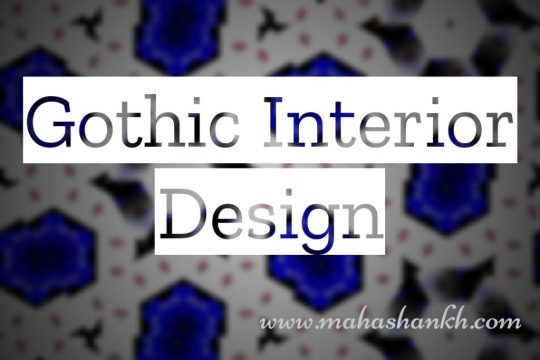
Gothic Interior Design Step into a world of dramatic contrasts, rich textures, and haunting beauty. Gothic interior design isn't for the faint of heart; it's a bold statement, a symphony of darkness and light that evokes mystery and grandeur. Dark Majesty: Foundations of Gothic Design Gothic design draws inspiration from medieval architecture and the Romantic era, weaving together elements of drama, theatricality, and a touch of the macabre. Imagine soaring ceilings punctuated by pointed arches, ornately carved furniture casting long shadows in flickering candlelight, and rich tapestries whispering tales of knights and forgotten empires. Key Elements of Gothic Interior Design: - Rich Color Palettes: Deep, jewel tones like emerald green, burgundy, and sapphire set the stage for a dramatic atmosphere. Accents of silver, gold, and bronze add a touch of luxury. - Dramatic Architectural Details: High ceilings with exposed beams, pointed arches, and stained glass windows create a sense of grandeur and mystery. Gargoyles or other sculptural elements can add a touch of the macabre. - Heavy Furniture and Fabrics: Gothic furniture features bold silhouettes and intricate carvings. Think four-poster beds, velvet armchairs, and chests decorated with ironwork. Fabrics are typically opulent, with damask, velvet, and brocade lending a sense of luxury and texture. - Moody Lighting: Candlelight and strategically placed lamps create a sense of intimacy and mystery. Chandeliers and sconces with wrought iron or crystal accents add a touch of drama. - Antiques and Curiosities: Gothic spaces love a touch of the past. Display antique weapons, vintage books, or intriguing artwork to tell a story and add a sense of timelessness. Substyles of Gothic Design: - Medieval Gothic: Think heavy oak furniture, tapestries, and stained glass windows depicting religious scenes. This style captures the essence of medieval castles and cathedrals. - Victorian Gothic: A more ornate and romantic take on Gothic, featuring dark wood furniture with intricate carvings, floral patterns, and velvet upholstery. - Modern Gothic: This contemporary interpretation incorporates sleek lines and modern materials with traditional Gothic elements like dark colors, dramatic lighting, and statement pieces. Creating Your Own Gothic Haven: Bringing a touch of Gothic charm to your home doesn't require a complete overhaul. Start small by incorporating key elements: - Paint an accent wall in a deep, dramatic color. - Add a statement piece like a four-poster bed or a velvet armchair. - Display vintage photos or artwork with a Gothic theme. - Hang tapestries or heavy curtains to create a sense of drama. - Invest in candles and strategically placed lamps for moody lighting. Remember, Gothic design is all about personal expression. Don't be afraid to mix and match styles and eras to create a space that reflects your own unique personality and sense of style. Beyond the Basics: - Play with texture: Combine smooth velvet with rough stone, or wood with metal, to create visual interest. - Don't shy away from the macabre: A touch of skulls, gargoyles, or other haunting elements can add an intriguing touch. - Balance the darkness with light: While Gothic design embraces darkness, it's important to have areas of light for balance. Natural light through stained glass windows can be particularly beautiful. - Most importantly, have fun! Gothic design is about creating a space that feels unique and inspiring to you. Embrace the mystery and drama, and let your imagination run wild. Gothic interior design is a journey into the realm of the extraordinary, a celebration of darkness and beauty in equal measure. So, open the door to your inner goth, embrace the shadows, and create a space that is both captivating and unforgettable.
Art Nouveau: Nature's Symphony in Design
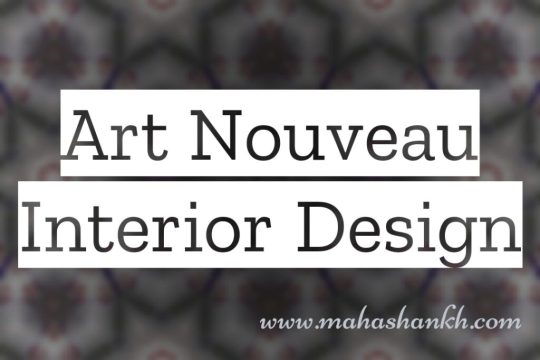
Art Nouveau: Nature's Symphony in Design Step into a realm where nature's curves intertwine with elegant forms, where light dances across shimmering surfaces, and every detail whispers a story of artistry. This is the world of Art Nouveau, a design movement that swept across Europe and America in the late 19th and early 20th centuries, leaving behind a legacy of breathtaking beauty and enduring style. Blooming from the Ashes of Tradition: Born in a time of artistic and industrial upheaval, Art Nouveau rejected the rigid formality of Victorian design and embraced the organic flow of nature. It was a rebellion against the machine, a celebration of hand-crafted artistry, and a symphony of sinuous lines, floral motifs, and vibrant colors. Key Elements of Art Nouveau Design: - Organic Lines and Forms: Gone are the straight lines and sharp corners. Art Nouveau embraces the sinuous curves of flowers, vines, and waves, weaving them into furniture, architecture, and decorative elements. - The Language of Nature: Floral motifs reign supreme, blooming across walls, furniture, and even light fixtures. Dragonflies, butterflies, and other creatures from the natural world add a touch of whimsy and movement. - Rich Materials and Textures: Glass, stained and vibrant, takes center stage, capturing and refracting light in a kaleidoscope of colors. Natural materials like wood, stone, and wrought iron add warmth and depth to the spaces. - Whimsical Touches and Artistic Expression: Art Nouveau is a canvas for imagination. Decorative elements like stained glass windows, mosaics, and sculptures become integral parts of the design, telling stories and adding unique character. - A Unified Symphony: From architecture to furniture to the smallest detail, Art Nouveau strives for a sense of cohesion. Every element flows together, creating a harmonious and immersive experience. Substyles of Art Nouveau: - French Art Nouveau: Characterized by its elegance and floral motifs, often seen in the works of Emile Gallé and Eugène Grasset. - Belgian Art Nouveau: More flamboyant and geometric, as exemplified by the bold architectural creations of Victor Horta. - British Art Nouveau: Known for its emphasis on craftsmanship and natural materials, seen in the designs of Charles Rennie Mackintosh. Bringing Art Nouveau Home: While Art Nouveau's heyday may have passed, its captivating spirit can still be incorporated into modern homes. Here are some ways to add a touch of its magic: - Embrace floral patterns: Wallpaper, upholstery, or even throw pillows can bring a touch of nature's vibrancy to your space. - Let the light flow: Stained glass panels or window hangings can add color and create a mesmerizing interplay of light and shadow. - Choose furniture with curves: Look for pieces with flowing lines and organic shapes to capture the essence of the movement. - Incorporate art and decorative elements: Sculptures, mosaics, or even vintage Art Nouveau posters can add a touch of artistic flair. - Don't be afraid to mix and match: Art Nouveau thrives on individuality. Combine elements from different substyles or eras to create a space that reflects your unique personality. Beyond the Basics: - Play with colors: Jewel tones like emerald green, sapphire blue, and deep burgundy create a dramatic yet elegant backdrop. - Incorporate natural materials: Wood, stone, and metal add warmth and texture to the space, grounding the artistic elements. - Don't forget the details: Light fixtures, door handles, and even cabinet knobs can be chosen to echo the organic forms and floral motifs of the style. - Most importantly, have fun! Art Nouveau is about celebrating life, nature, and artistic expression. Let your creativity flow and embrace the joy of creating a space that feels both beautiful and personal. Art Nouveau's legacy goes beyond aesthetics. It reminds us of the beauty and inspiration found in nature, the power of artistic expression, and the importance of creating spaces that nourish our souls. So, open your doors to the symphony of nature, let your imagination take flight, and experience the enduring magic of Art Nouveau in your own home.
Step into the Future: A Guide to High-Tech Interior Design
Read the full article
#ArtNouveau#ArtDecoInspired#ArtisticExpression#Artsandcraftsstyle#AsianFusion#AsianFusionDesign#BauhausInfluence#BohemianStyle#Bohochic#CoastalCottage#CoastalLiving#ColonialHeritage#ContemporaryRustic#CottageCore#DesertOasis#Design#EclecticDesign#FarmhouseStyle#Fashion#Frenchprovincial#FrenchCountryChic#FuturisticElements#FuturisticInteriors#Globalnomad#GothicGlam#High-TechModern#HighTechLiving#HollywoodRegency#Indian#IndustrialChic
8 notes
·
View notes